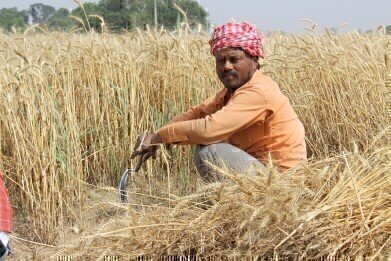Air Monitoring
How Is India Helping Farmers with Air Pollution?
Feb 13 2018
The Indian government has announced the introduction of new subsidies aimed at curbing the practice of crop burning among northern states. Although it is illegal, many Indian farmers from Haryana and Punjab set the residue from the autumn harvest afire to quickly and easily clear the field for the next year’s sowing.
However, the practice results in huge amounts of pollution being emitted into the air and is regularly responsible for dangerous air quality in nearby New Delhi. Therefore the government are looking to curtail its use by offering financial incentives for farmers to avoid it.
A yearly problem
At the beginning of December every year, thousands across northern India burn the stubble in their fields as a shortcut to preparing the terrain for the oncoming season. However, doing so releases vast amounts of particulate matter 2.5 (PM2.5) into the air, which can easily infiltrate the lungs and cause a variety of health complications. As a result, stubble burning has been outlawed – though many farmers ignore the ruling and still follow the practice.
The resulting contamination affects not only their own land, but the capital city and the neighbouring regions as well. Indeed, a 2016 study from the Indian Institute of Technology (ITT) in Kanpur revealed that Delhi’s airwaves could be cleansed by up to 90% if the practice were done away with.
Subsidising change
With farmers unwilling to obey the law, the government have taken another approach to solving the problem. Rather than punishing disobedience, they are attempting to reward those who genuinely wish to change their habits, by offering subsidies on a range of machinery that will make the practice obsolete.
For example, one such piece of equipment tills the soil as it plants new seeds, thus removing the need to clear the land beforehand. “I think it's a crucial measure,” explained Chandra Venkataraman, a professor at ITT in Bombay. “For a large number of the northern states, agricultural residue burning is the second most important source contributing to air pollution.”
A wider approach
While eradicating stubble burning will alleviate air quality concerns in the north of the country, air pollution is a problem which affects the whole of India and a broader plan to tackle it must be implemented. A growing market for continuous emissions monitoring systems (CEMS) in developing countries has given the issue national impetus, leading to the government introducing several incentives aimed at improving air quality.
For example, they have announced an ambitious plan of phasing out the sale of fossil fuel-powered vehicles completely by 2030, as well as planting millions of new trees and pouring money into renewable energy sources such as solar, wind and wave. However, the country still depends upon the highly polluting source of coal for 80% of its energy needs and has an extremely fast developing economy, so a move away from coal, oil and gas will be needed as soon as possible if a real difference in air quality is to be seen.
Digital Edition
IET 34.2 March 2024
April 2024
Gas Detection - Biogas batch fermentation system for laboratory use with automatic gas analysis in real time Water/Wastewater - Upcycling sensors for sustainable nature management - Prist...
View all digital editions
Events
May 06 2024 Minneapolis, MN, USA
May 13 2024 Munich, Germany
May 15 2024 Lund, Sweden
May 15 2024 Frankurt-am-Main, Germany
May 20 2024 Columbus, OH, USA


















